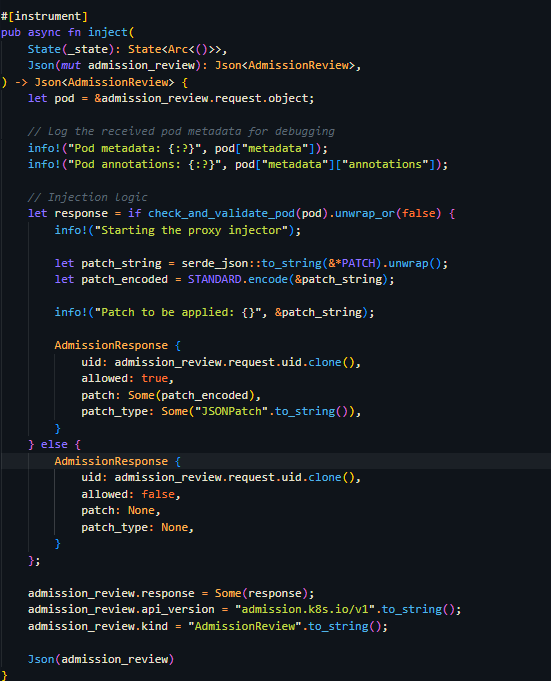Best Product Analytics tools for 2025
What is Product Analytics, and why is it important? Product analytics involves collecting, measuring, and analyzing user interactions with your product. Instead of focusing on what the product was designed to do, it emphasizes how users actually engage with it. It tracks specific events and their properties and groups them to reveal meaningful patterns. Understanding how users engage with your product is essential today. This is where product analytics comes in; it provides clear data that you can use to measure and optimize the user experience. By leveraging this, you can make informed decisions that help improve your product, ensuring it meets and exceeds user expectations and builds lasting customer loyalty. What are the alternatives? The other options are divided into two groups: Third-party applications - traditional product analytics Warehouse-native self-service analytics tools Warehouse-native analytics solutions are new to the product and marketing analytics market. They work on top of your existing data infrastructure, such as a data warehouse, data lake, or operation database. Their main advantages are cost efficiency and real-time access to warehouse-first data. Their main disadvantage is that they may require careful data modeling and optimization to operate fast in data warehouses. Below, I present six alternatives in a detailed table, comparing their features and pricing. *Assuming 1M active users or visitors, one user generates 50 monthly events and 10 product managers. Having analyzed each product, let's explore their main advantages. We'll maintain the distinction between the two groups. Traditional product analytics alternative Amplitude The main features of Amplitude Behavioral Analytics: You can gain comprehensive insights into your customers' behavior and preferences, allowing you to analyze the impact of your marketing efforts effectively. User Segmentation and Event Tracking: You can divide your customers into groups based on specific characteristics and track individual user events. This helps you tailor your strategies for different segments. Real-time Analytics and A/B Testing: You can access up-to-the-minute insights, enabling you to experiment with various approaches and optimize user experiences in real-time. Product Paths and Conversion Funnels: You can track user journeys and identify abandonment points, which allows you to fine-tune customer experiences and improve conversion rates. Cost: Amplitude's pricing is event-based, meaning costs increase with the number of events tracked. For a site with 1M active users or visitors, assuming each user generates 50 monthly events, Amplitude would cost approximately $150K (rough estimation) Mixpanel The main features of Mixpanel Event Tracking and Segmentation: You can monitor user actions and segment users based on their behaviors, attributes, and cohorts. This lets you gain detailed insights into how different groups interact with your product. Funnel and Retention Analysis: You can evaluate user journeys and conversion rates while analyzing user retention over time. This helps you understand where users drop off and how to keep them engaged. A/B Testing: You can conduct experiments to optimize user experiences and product features. This lets you test different approaches and see what resonates best with your audience. Custom Dashboards and Real-Time Reporting: You can create tailored visualizations that suit your specific needs and access live data on current user activity and trends. This keeps you informed and agile in your decision-making. Integration Flexibility: You can easily integrate with various tools and platforms for comprehensive data analysis. This flexibility allows you to leverage your existing tech stack while enhancing your analytics capabilities. Cost: Mixpanel's pricing is based on Monthly Tracked Users (MTU), meaning costs increase with the number of users you track. For a site with 1M active users or visitors, assuming each user generates 50 monthly events, Mixpanel would cost approximately $150K (rough estimation). Pendo The main features of Pendo In-App Guidance: You can create in-app messages, tooltips, and walkthroughs that guide users through your product. This support improves feature adoption and helps users get the most out of your offerings. User Feedback Collection: In-app surveys and feedback mechanisms can gather valuable user insights, helping you better understand user needs and preferences. Feature Planning and Roadmapping: You can use data-driven insights to prioritize feature development and product improvements. This ensures that you focus on what truly matters to your users. Customer Journey Mapping: You can visualize and optimize the customer journey across different touchpoints. This helps you identify opportunities for enhancing user engagement and satisfaction. Cost: Pendo's pricing i

What is Product Analytics, and why is it important?
Product analytics involves collecting, measuring, and analyzing user interactions with your product. Instead of focusing on what the product was designed to do, it emphasizes how users actually engage with it. It tracks specific events and their properties and groups them to reveal meaningful patterns.
Understanding how users engage with your product is essential today. This is where product analytics comes in; it provides clear data that you can use to measure and optimize the user experience. By leveraging this, you can make informed decisions that help improve your product, ensuring it meets and exceeds user expectations and builds lasting customer loyalty.
What are the alternatives?
The other options are divided into two groups:
- Third-party applications - traditional product analytics
- Warehouse-native self-service analytics tools
Warehouse-native analytics solutions are new to the product and marketing analytics market. They work on top of your existing data infrastructure, such as a data warehouse, data lake, or operation database. Their main advantages are cost efficiency and real-time access to warehouse-first data. Their main disadvantage is that they may require careful data modeling and optimization to operate fast in data warehouses.
Below, I present six alternatives in a detailed table, comparing their features and pricing.
*Assuming 1M active users or visitors, one user generates 50 monthly events and 10 product managers.
Having analyzed each product, let's explore their main advantages. We'll maintain the distinction between the two groups.
Traditional product analytics alternative
Amplitude
The main features of Amplitude
- Behavioral Analytics: You can gain comprehensive insights into your customers' behavior and preferences, allowing you to analyze the impact of your marketing efforts effectively.
- User Segmentation and Event Tracking: You can divide your customers into groups based on specific characteristics and track individual user events. This helps you tailor your strategies for different segments.
- Real-time Analytics and A/B Testing: You can access up-to-the-minute insights, enabling you to experiment with various approaches and optimize user experiences in real-time.
- Product Paths and Conversion Funnels: You can track user journeys and identify abandonment points, which allows you to fine-tune customer experiences and improve conversion rates.
- Cost: Amplitude's pricing is event-based, meaning costs increase with the number of events tracked. For a site with 1M active users or visitors, assuming each user generates 50 monthly events, Amplitude would cost approximately $150K (rough estimation)
Mixpanel
The main features of Mixpanel
- Event Tracking and Segmentation: You can monitor user actions and segment users based on their behaviors, attributes, and cohorts. This lets you gain detailed insights into how different groups interact with your product.
- Funnel and Retention Analysis: You can evaluate user journeys and conversion rates while analyzing user retention over time. This helps you understand where users drop off and how to keep them engaged.
- A/B Testing: You can conduct experiments to optimize user experiences and product features. This lets you test different approaches and see what resonates best with your audience.
- Custom Dashboards and Real-Time Reporting: You can create tailored visualizations that suit your specific needs and access live data on current user activity and trends. This keeps you informed and agile in your decision-making.
- Integration Flexibility: You can easily integrate with various tools and platforms for comprehensive data analysis. This flexibility allows you to leverage your existing tech stack while enhancing your analytics capabilities.
- Cost: Mixpanel's pricing is based on Monthly Tracked Users (MTU), meaning costs increase with the number of users you track. For a site with 1M active users or visitors, assuming each user generates 50 monthly events, Mixpanel would cost approximately $150K (rough estimation).
Pendo
The main features of Pendo
- In-App Guidance: You can create in-app messages, tooltips, and walkthroughs that guide users through your product. This support improves feature adoption and helps users get the most out of your offerings.
- User Feedback Collection: In-app surveys and feedback mechanisms can gather valuable user insights, helping you better understand user needs and preferences.
- Feature Planning and Roadmapping: You can use data-driven insights to prioritize feature development and product improvements. This ensures that you focus on what truly matters to your users.
- Customer Journey Mapping: You can visualize and optimize the customer journey across different touchpoints. This helps you identify opportunities for enhancing user engagement and satisfaction.
- Cost: Pendo's pricing is not publicly available, but it's likely to be similar to Amplitude's. Pendo uses a Monthly Tracked User (MTU) model, meaning costs increase with the number of users tracked. For a site with 1M active users or visitors, assuming each user generates 50 monthly events, the cost would be approximately $150K (rough estimation).
Warehouse-native analytics alternatives
Mitzu
The main features of Mitzu
- Warehouse-Native Analytics with Automatic SQL Query Generation: Mitzu provides a holistic view by directly merging product data with marketing and revenue insights from your data warehouse. It simplifies data analysis by automatically generating SQL queries based on your inputs, eliminating the need for extensive SQL knowledge.
- Flexibility on data model changes: You can adjust the data model or add new events without impacting the performance.
- Collaboration features: You can easily embed your dashboards and charts to Notion, Miro or Craft for sharing.
- Quick customer support: Fast and efficient assistance whenever issues arise, ensuring minimal downtime.
- Fast first integration: The setup and integration usually take less than an hour.
- Scalable architecture: Mitzu.io grows with your data volume, supporting terabytes to petabytes without performance degradation. Its pricing model is based on user seats rather than data volume, offering predictable costs as businesses scale.
- Advanced features: The platform supports retention analysis, funnel tracking, cohort segmentation, advanced segmentation, and subscription analytics (e.g., Monthly Recurring Revenue), making it particularly suitable for SaaS companies.
- Self-service BI: It reduces the reliance on data teams as non-technical team members are able to create insights.
- Data governance: 100% data reliability by syncing directly with the warehouse at every step, preserving compliance and security protocols. Also it eliminates data silos and duplication
Ideal Use Case
Mitzu.io is ideal for companies with large datasets looking to democratize analytics across teams without requiring extensive technical expertise.
Netspring acquired by Optimizely
The main features
- Self-Service: You can access a rich library of product analytics reports and easily switch between reports and ad hoc visual data exploration. This flexibility allows you to find answers to your questions quickly and efficiently.
- Warehouse-Native: In your data warehouse, you can integrate product instrumentation with any business data, enabling comprehensive, context-rich analysis. This means you can leverage all your data for deeper insights without the hassle of data duplication.
- SQL Option: You can simplify funnel and path queries without writing complex SQL. However, if you prefer, you still have the option to use SQL for specialized analyses, giving you the best of both worlds.
- Product and Customer Analytics: You can utilize solutions for behavioral analytics, marketing analytics, operational analytics, customer 360 views, product 360 insights, and SaaS product-led growth (PLG) strategies. This comprehensive approach helps you better understand your users and drive informed decision-making.
- Cost: Netspring employs a transparent seat-based pricing model. For companies with 10 product or marketing managers requiring self-served analytics, the cost would be around $12K annually. This pricing is similar to Mitzu. Although this approach may lead to increased data warehouse costs, Netspring asserts that the combined expenses of data warehousing and their service will result in an 80% reduction compared to conventional product analytics solutions.
- Optimizely acquired Netspring: The future of this product is uncertain. It may potentially cease to exist as an independent offering.
Kubit
Main features
- User Engagement: It helps you discover which user behaviors contribute to higher lifetime value and learn effective strategies for retaining and expanding your user base.
- Feature Engagement: You can identify which product features drive the most engagement and help create power users within your product.
- Conversion Analysis: Understand how users navigate key funnels in your product and pinpoint areas that may lead to drop-offs. This will allow you to address these issues effectively.
- Consumption Patterns: Gain insights into which product features and content to promote and which ones to phase out.
- Cost: Kubit pricing is based on Monthly Tracked Users (MTU), meaning costs increase with the number of users tracked. For a site with 1M active users or visitors, assuming each user generates 50 monthly events, Kubit would cost approximately $50K–$150K (rough estimation). Exact pricing is not publicly available.
Conclusion
After reviewing the six alternatives, I compared two approaches to product analytics: traditional third-party solutions and warehouse-native tools.
Warehouse-native
While the warehouse-native options are more recent, they might need more complex features than the traditional analytics solution already supports. They are a great choice for teams with large datasets. Their main benefits are cost efficiency and real-time access to the cloud data warehouse.
Third-party analytics tools
Traditional third-party analytics solutions can provide better response times during analytics. However, they may need more than the entire picture as data must first be copied to these solutions from the company data warehouse.
Which Solution Should You Choose?
Consider a third-party analytics solution if you have a small number of visitors or active users and don't need to maintain an active data warehouse with usage data. Opt for a warehouse-native solution if you have a large user base or high visitor count to analyze. This is typically the case for B2C freemium products or if you already maintain a cloud data warehouse where you store all your data. In these scenarios, warehouse-native solutions offer the most cost-effective and efficient experience.










































































































































































![[The AI Show Episode 144]: ChatGPT’s New Memory, Shopify CEO’s Leaked “AI First” Memo, Google Cloud Next Releases, o3 and o4-mini Coming Soon & Llama 4’s Rocky Launch](https://www.marketingaiinstitute.com/hubfs/ep%20144%20cover.png)
























































































































































![Is This Programming Paradigm New? [closed]](https://miro.medium.com/v2/resize:fit:1200/format:webp/1*nKR2930riHA4VC7dLwIuxA.gif)

























































































-Classic-Nintendo-GameCube-games-are-coming-to-Nintendo-Switch-2!-00-00-13.png?width=1920&height=1920&fit=bounds&quality=70&format=jpg&auto=webp#)














































































































































![M4 MacBook Air Drops to New All-Time Low of $912 [Deal]](https://www.iclarified.com/images/news/97108/97108/97108-640.jpg)
![New iPhone 17 Dummy Models Surface in Black and White [Images]](https://www.iclarified.com/images/news/97106/97106/97106-640.jpg)





































































































































